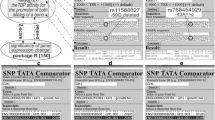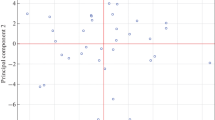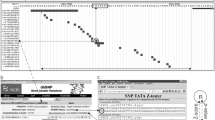Abstract
The following heuristic hypothesis has been proposed: if an excess of a protein in several animal organs was experimentally identified as a physiological marker of increased aggressiveness, and if a single nucleotide polymorphism (SNP) can cause the overexpression of a human gene homologous to the animal gene encoding this protein, then this polymorphism can be a candidate SNP marker of social dominance. In turn, a deficient expression would correspond to subordinate behavior. Within this hypothesis, we analyzed 21 human genes, ADORA2A, BDNF, CC2D1A, CC2D1B, ESR2, FEV, FOS, GH1, GLTSCR2, GRIN1, HTR1B, HTR1A, HTR2A, HTR2C, LGI4, LEP, MAOA, SLC17A7, SLC6A3, SNCA, and TH, which determine the functions of the proteins known as the physiological markers of aggressive behavior in animals. These genes encode for hormones and their receptors, biosynthetic enzymes, receptors of neurotransmitters, and transcription and neurotrophic factors. These proteins have been postulated to play important roles in determining the hierarchical relationships in social animals. Using our previously developed Web-service SNP_TATA_Comparator (http://beehive.bionet.nsc.ru/cgi-bin/mgs/tatascan/start.pl), we analyzed 381 SNPs within the [–70;–20] region preceding the start of the protein-coding transcripts, obtained from the database dbSNP, v.147. This is the region for all the known TATA-binding protein (TBP) binding sites. As a result, we found 45 and 47 candidate SNP markers of dominance and subordination, respectively (e.g., rs373600960 and rs747572588). Within the proposed heuristic hypotheses and dbSNP database v.147, we found statistically significant (α < 10–5) evidence of the effects of natural selection against the deficient expression of genes, which can affect the predisposition to dominate. We also obtained evidence favoring the hypothesis that both subordinate and dominant behavior can be the norm of reaction of aggressiveness (difference not significant: α > 0.35). The proposed hypothesis, the candidate SNP markers obtained on its basis, and the observed regularities of the effects of their natural selection on the human genome are discussed in comparison with the published data with respect to whether these markers can have an effect on the expression of social dominance in human society. We conclude that our candidate SNPs, identified with a computational model, require further experimental verification.
Similar content being viewed by others
References
1000. Genomes Project Consortium, Abecasis, G.R., Auton, A., Brooks, L.D., DePristo, M.A., Durbin, R.M., Handsaker, R.E., Kang, H.M., Marth, G.T., and McVean, G.A., An integrated map of genetic variation from 1.092 human genomes, Nature, 2012, vol. 491, no. 7422, pp. 56–65. doi 10.1038/nature11632
Abbas, A., Lechevrel, M., and Sichel, F., Identification of new single nucleotid polymorphisms (SNP) in alcohol dehydrogenase class IVADH7 gene within a French population, Arch. Toxicol., 2006, vol. 80, no. 4, pp. 201–205. doi 10.1007/s00204-005-0031-7
Amberger, J.S., Bocchini, C.A., Schiettecatte, F., Scott, A.F., and Hamosh, A., OMIM.org: Online Mendelian Inheritance in Man (OMIM®), an on line catalog of human genes and genetic disorders, Nucleic Acids Res., 2015, vol. 43, pp. D789–D798. doi 10.1093/nar/gku1205
Arkova, O.V., Kuznetsov, N.A., Fedorova, O.S., Kolchanov, N.A., and Savinkova, L.K., Real-time interaction between TBP and the TATA box of the human triosephosphate isomerase gene promoter in the norm and pathology, Acta Naturae, 2014, vol. 6, no. 2, pp. 36–40.
Arkova, O.V., Ponomarenko, M.P., Rasskazov, D.A., Drachkova, I.A., Arshinova, T.V., Ponomarenko, P.M., Savinkova, L.K., and Kolchanov, N.A., Obesity-related known and candidate SNP markers can significantly change affinity of TATA-binding protein for human gene promoters, BMC Genomics, 2015, vol. 16. doi 10.1186/1471-2164-16-S13-S5
Belyaev, D.K., The Wilhelmine E. Key 1978 invitational lecture. Destabilizing selection as a factor in domestication, J. Hered., 1979, vol. 70, no. 5, pp. 301–308.
Bondar, N.P., Boyarskikh, U.A., Kovalenko, I.L., Filipenko, M.L., and Kudryavtseva, N.N., Molecular implications of repeated aggression: Th, Dat1, Snca and Bdnf gene expression in the VTA of victorious male mice, PLoS ONE, 2009, vol. 4, no. 1. doi 10.1371/journal.pone.0004190
Cao, J., Joyner, L., Mickens, J.A., Leyrer, S.M., and Patisaul, H.B., Sex-specific ESR2 mRNA expression in the rat hypothalamus and amygdala is altered by neonatal bisphenol A exposure, Reproduction, 2014, vol. 147, no. 4, pp. 537–554. doi 10.1530/REP-13-0501
Chadaeva, I.V., Ponomarenko, M.P., Rasskazov, D.A., Sharypova, E.B., Kashina, E.V., Matveeva, M.Yu., Arshinova, T.V., Ponomarenko, P.M., Arkova, O.V., Bondar, N.P., Savinkova, L.K., and Kolchanov, N.A., Candidate SNP markers of aggressiveness-related complications and co morbidities of genetic diseases are predicted by a significant change in the affinity of TATA-binding protein for human gene promoters, BMC Genomics, 2016, vol. 14, p. 995. doi 10.1186/s12864-016-3353-3
Colonna, V., Ayub, Q., Chen, Y., Pagani, L., Luisi, P., Pybus, M., Garrison, E., Xue, Y., Tyler-Smith, C., 1000 Genomes Project Consortium, Abecasis, G.R., Auton, A., Brooks, L.D., Depristo, M.A., Durbin, R.M., et al., Human genomic regions with exceptionally high levels of population differentiation identified from 911 whole-genome sequences, Genome Biol., 2014, vol. 15, no. 6, p. R88. doi 10.1186/gb-2014-15-6-r88
Delgadillo, R.F., Whittington, J.E., Parkhurst, L.K., and Parkhurst, L.J., The TATA-binding protein core domain in solution variably bends TATA sequences via a three-step binding mechanism, Biochemistry, 2009, vol. 48, no. 8, pp. 1801–1809. doi 10.1021/bi8018724
Deplancke, B., Alpern, D., and Gardeux, V., The genetics of transcription factor DNA binding variation, Cell, 2016, vol. 166, no. 3, pp. 538–554. doi 10.1016/j.cell.2016.07.012
Drachkova, I., Savinkova, L., Arshinova, T., Ponomarenko, M., Peltek, S., and Kolchanov, N., The mechanism by which TATA-box polymorphisms associated with human hereditary diseases influence interactions with the TATAbinding protein, Hum. Mutat., 2014, vol. 35, no. 5, pp. 601–608. doi 10.1002/humu.22535
Dusek, A., Bartos, L., and Svecova, L., The effect of a mother’s rank on her offspring’s pre-weaning rank in farmed red deer, Appl. Anim. Behav. Sci., 2007, vol. 103, nos. 1-2, pp. 146–155. doi 10.1016/j.applanim.2006.03.020
Ehrman, L. and Parsons, P.A., Behavior Genetics and Evolution, New York: Mc Graw-Hill, 1981.
Eldakar, O.T. and Gallup, A.C., The group-level consequences of sexual conflict in multigroup populations, PLoS ONE, 2011, vol. 6, no. 10. doi 10.1371/journal.pone.0026451
Ellingrod, V.L., Perry, P.J., Ringold, J.C., Lund, B.C., Bever-Stille, K., Fleming, F., Holman, T.L., and Miller, D., Weight gain associated with the -759C/T polymorphism of the 5HT2C receptor and olanzapine, Am. J. Med. Genet. B Neuropsychiatr. Genet., 2005, vol. 134B, no. 1, pp. 76–78. doi 10.1002/ajmg.b.20169
Engh, A.L., Esch, K., Smale, L., and Holekamp, K.E., Mechanisms of maternal rank “inheritance” in the spotted hyaena, Crocuta cr., Anim. Behav., 2000, vol. 60, no. 3, pp. 323–332. doi 10.1006/anbe.2000.1502
Haeussler, M., Raney, B.J., Hinrichs, A.S., Clawson, H., Zweig, A.S., Karolchik, D., Casper, J., Speir, M.L., Haussler, D., and Kent, W.J., Navigating protected genomics data with UCSC genome browser in a box, Bioinformatics, 2015, vol. 31, no. 5, pp. 764–766. doi 10.1093/bioinformatics/btu712
Haldane, J.B.S., The Cost of Natural Selection, J. Genet., 1957, vol. 55, pp. 511–524.
Heyne, H.O., Lautenschlager, S., Nelson, R., Besnier, F., Rotival, M., Cagan, A., Kozhemyakina, R., Plyusnina, I.Z., Trut, L., Carlborg, O., Petretto, E., Kruglyak, L., Paabo, S., Schoneberg, T., and Albert, F.W., Genetic influences on brain gene expression in rats selected for tameness and aggression, Genetics, 2014, vol. 198, no. 3, pp. 1277–1290. doi 10.1534/genetics.114.168948
Hinde, R.A., Animal Behaviour, New York: McGraw-Hill, 1970.
Ilchibaeva, T.V., Kondaurova, E.M., Tsybko, A.S., Kozhemyakina, R.V., Popova, N.K., and Naumenko, V.S., Brainderived neurotrophic factor (BDNF) and its precursor (proBDNF) in genetically defined fear-induced aggression, Behav. Brain Res., 2015, vol. 290, pp. 45–50. doi 10.1016/j.bbr.2015.04.041
Jegou, S., El Yacoubi, M., Mounien, L., Ledent, C., Parmentier, M., Costentin, J., Vaugeois, J.M., and Vaudry, H., Adenosine A2A receptor gene disruption provokes marked changes in melanocortin content and pro-opiomelanocortin gene expression, J. Neuroendocrinol., 2003, vol. 15, no. 12, pp. 1171–1177.
Ji, N.Y. and Findling, R.L., Pharmacotherapy for mental health problems in people with intellectual disability, Curr. Opin. Psychiatry, 2016, vol. 29, pp. 103–125. doi 10.1097/YCO.0000000000000233
Kasowski, M., Grubert, F., Heffelfinger, C., Hariharan, M., Asabere, A., Waszak, S.M., Habegger, L., Rozowsky, J., Shi, M., Urban, A.E., Hong, M.Y., Karczewski, K.J., Huber, W., Weissman, S.M., Gerstein, M.B., Korbel, J.O., and Snyder, M., Variation in transcription factor binding among humans, Science, 2010, vol. 328, no. 5975, pp. 232–235. doi 10.1126/science.1183621
Kimura, M., A simple method for estimating evolutionary rates of base substitutions through comparative studies of nucleoti de sequences, J. Mol. Evol., 1980, vol. 16, pp. 111–120.
Kimura, M., Evolutionary rate at the molecular level, Nature, 1968, vol. 217, no. 5129, pp. 624–626. doi 10.1038/217624a0
Kleshchev, M.A., Gutorova, N., and Osadchuk, L.V., Genetic features of age dynamics of agonistic behavior in male laboratory mice under conditions of social hierarchy, Ekol. Genet., 2013, vol. 11, no. 4, pp. 64–72.
Kondaurova, E.M., Ilchibaeva, T.V., Tsybko, A.S., Kozhemyakina, R.V., Popova, N.K., and Naumenko, V.S., 5-HT1A receptor gene silencers Freud-1 and Freud-2 are differently expressed in the brain of rats with genetically determined high level of fear-induced aggression or its absence, Behav. Brain Res., 2016, vol. 310, pp. 20–25. doi 10.1016/j.bbr.2016.04.050
Kudryavtseva, N.N., Bondar, N.P., Boyarskikh, U.A., and Filipenko, M.L., Snca and Bdnf gene expression in the VTA and raphe nuclei of mid brain in chronically victorious and defeated male mice, PLoS ONE, 2010, vol. 5, no. 11. doi 10.1371/journal.pone.0014089
Kulikov, A.V., Bazhenova, E.Y., Kulikova, E.A., Fursenko, D.V., Trapezova, L.I., Terenina, E.E., Mormede, P., Popova, N.K., and Trapezov, O.V., Interplay between aggression, brain monoamines and fur color mutation in the American mink, Genes Brain Behav., 2016. doi 10.1111/gbb.12313
Landrum, M.J., Lee, J.M., Riley, G.R., Jang, W., Rubinstein, W.S., Church, D.M., and Maglott, D.R., ClinVar: Public archive of relationships among sequence variation and human phenotype, Nucleic Acids Res., 2014, vol. 42, pp. D980–D985. doi 10.1093/nar/gkt1113
Lin, D., Boyle, M.P., Dollar, P., Lee, H., Lein, E.S., Perona, P., and Anderson, D.J., Functional identification of an aggression locus in the mouse hypothalamus, Nature, 2011, vol. 470, no. 7333, pp. 221–226. 09736 doi 10.1038/nature
Lorenz, K., On Aggression, Hove (UK): Psychology Press, 2002.
Martianov, I., Viville, S., and Davidson, I., RNA polymerase II transcription in murine cells lacking the TATA binding protein, Science, 2002, vol. 298, no. 5595, pp. 1036–1039. doi 10.1126/science.1076327
Michopoulos, V., Higgins, M., Toufexis, D., and Wilson, M.E., Social subordination produces distinct stress-related phenotypes in female rhesus monkeys, Psychoneuroendocrinology, 2012, vol. 37, no. 7, pp. 1071–1085. doi 10.1016/j.psyneuen. 2011.12.004
Mogno, I., Vallania, F., Mitra, R.D., and Cohen, B.A., TATA is a modular component of synthetic promoters, Genome Res., 2010, vol. 20, no. 10, pp. 1391–1397. doi 10.1101/gr.106732.110
Moore, A.J., Genetic influences on social dominance: Cow wars, Heredity, 2013, vol. 110, no. 1, pp. 1–2. doi 10.1038/hdy.2012.85
Naumenko, E.V., Osadchuk, A.V., Serova, L.I., and Shishkina, G.T., Genetiko-fiziologicheskie mekhanizmy regulyatsii funktsii semennikov (Genetic-Physiological Mechanisms of Regulation of Functions of Testes), Novosibirsk: Nauka, 1983.
Osadchuk, L.V., Bragin, A.V., and Osadchuk, A.V., Interlinear differences in social dominance and temporal patterns of agonistic behavior in male laboratory mice, Zh. Vyssh. Nervn. Deyat. im. I.P. Pavlova, 2009, vol. 59, no. 4, pp. 473–481.
Osadchuk, L.V., Salomacheva, I.N., Bragin, A.V., and Osadchuk, A.V., Reproductive correlates of social hierarchy in males of laboratory mice, Zh. Vyssh. Nervn. Deyat. im. I.P. Pavlova, 2007, vol. 57, no. 5, pp. 604–612.
Podkolodnyy, N.L., Afonnikov, D.A., Vaskin, Yu.Yu., Bryzgalov, L.O., Ivanisenko, V.A., Demenkov, P.S., Ponomarenko, M.P., Rasskazov, D.A., Gunbin, K.V., Protsyuk, I.V., Shutov, I.Yu., Leontyev, P.N., Fursov, M.Yu., Bondar, N.P., Antontseva, E.V., et al., Program complex SNP-MED for analysis of single-nucleotide polymorphism (SNP) effects on the function of genes associated with socially significant diseases, Russ. J. Genet.: Appl. Res., 2014, vol. 4, no. 3, pp. 159–167. doi 10.1134/S2079059714030034
Ponomarenko, M., Arkova, O., Rasskazov, D., Ponomarenko, P., Savinkova, L., and Kolchanov, N., Candidate SNP markers of gender-biased autoimmune complications of monogenic diseases are predicted by a significant change in the affinity of TATA-binding protein for human gene promoters, Front. Immunol., 2016, vol. 7, p. 130. doi 10.3389/fimmu.2016.00130
Ponomarenko, M., Mironova, V., Gunbin, K., and Savinkova, L., Hogness Box, in Brenner’s Encyclopedia of Genetics, Maloy, S. and Hughes, K., Eds., San Diego: Acad. Press, Elsevier Inc.,2013, vol. 3, pp. 491–494. doi 10.1016/B978-0-12-374984-0.00720-8
Ponomarenko, M., Rasskazov, D., Arkova, O., Ponomarenko, P., Suslov, V., Savinkova, L., and Kolchanov, N., How to use SNP_TATA_Comparator to find a significant change in gene expression caused by the regulatory SNP of this gene’s promoter via a change in affinity of the TATAbinding protein for this promoter, Biomed. Res. Int., 2015, vol. 2015. doi 10.1155/2015/359835
Ponomarenko, P., Rasskazov, D., Suslov, V., Sharypova, E., Savinkova, L., Podkolodnaya, O., Podkolodny, N., Tverdokhleb, N., Chadaeva, I., Ponomarenko, M., and Kolchanov, N., Candidate SNP markers of chronopathologies are predicted by a significant change in the affinity of TATA-binding protein for human gene promoters, BioMed Res. Int., 2016, vol. 2016. doi 10.1155/2016/8642703
Ponomarenko, P.M., Ponomarenko, M.P., Drachkova, I.A., Lysova, M.V., Arshinova, T.V., Savinkova, L.K., and Kolchanov, N.A., Prediction of the affinity of the TATA-binding protein to TATA boxes with single nucleotide polymorphisms, Mol. Biol. (Moscow), 2009, vol. 43, no. 3, pp. 472–479. doi 10.1134/S0026893309030157
Ponomarenko, P.M., Savinkova, L.K., Drachkova, I.A., Lysova, M.V., Arshinova, T.V., Ponomarenko, M.P., and Kolchanov, N.A., A step-by-step model of TBP/TATA box binding allows predicting human hereditary diseases by single nucleotide polymorphism, Dokl. Biochem. Biophys., 2008, vol. 419, pp. 88–92.
Ponomarenko, P.M., Suslov, V.V., Savinkova, L.K., Ponomarenko, M.P., and Kolchanov, N.A., A precise equilibrium equation for four steps of binding between TBP and TATA-box allows for the prediction of phenotypical expression upon mutation, Biophysics, 2010, vol. 55, no. 3, pp. 358–369. doi 10.1134/S0006350910030036
Popova, N.K., From genes to aggressive behavior: The role of serotonergic system, BioEssays, 2006, vol. 28, no. 5, pp. 495–503. doi 10.1002/bies.20412
Popova, N.K., Naumenko, V.S., Kozhemyakina, R.V., and Plyusnina, I.Z., Functional characteristics of serotonin 5-HT2A and 5-HT2C receptors in the brain and the expression of the 5-HT2A and 5-HT2C receptor genes in aggressive and non-aggressive rats, Neurosci. Behav. Physiol., 2010, vol. 40, no. 4, pp. 357–361. doi 10.1007/s11055-010-9264-x
Prud’Homme, J. and Chapais, B., Aggressive interventions and matrilineal dominance relations in semifree-ranging Barbary macaques (Macaca sylvanus), Primates, 1993, vol. 34, no. 3, pp. 271–283. doi 10.1007/BF02382621
Reif, A., Jacob, C.P., Rujescu, D., Herterich, S., Lang, S., Gutknecht, L., Baehne, C.G., Strobel, A., Freitag, C.M., Giegling, I., Romanos, M., Hartmann, A., Rosler, M., Renner, T.J., et al., Influence of functional variant of neuronal nitric oxide synthase on impulsive behaviors in humans, Arch. Gen. Psychiatry, 2009, vol. 66, no. 1, pp. 41–50. doi 10.1001/archgenpsychiatry.2008.510
Rosenfeld, C.S., Bisphenol A and phthalate endocrine disruption of parental and social behaviors, Front. Neurosci., 2015, vol. 9, p. 57. doi 10.3389/fnins.2015.00057
Rowell, T.E., The concept of social dominance, Behav. Neural Biol., 1974, vol. 11, pp. 131–154.
Savinkova, L., Drachkova, I., Arshinova, T., Ponomarenko, P., Ponomarenko, M., and Kolchanov, N., An experimental verification of the predicted effects of promoter TATA-box polymorphisms associated with human diseases on interactions between the TATA boxes and TATA-binding protein, PLoS ONE, 2013, vol. 8, no. 2. doi 10.1371/journal.pone.0054626
Savonenko, A., Filipkowski, R.K., Werka, T., Zielinski, K., and Kaczmarek, L., Defensive conditioning-related functional heterogeneity among nuclei of the rat amygdala revealed by c-Fos mapping, Neuroscience, 1999, vol. 94, no. 3, pp. 723–733.
Serova, L.I., Kozlova, O.N., and Naumenko, E.V., The significance of the genotype and some individual behavioral features for the manifestation of the dominant phenotype in mice in micropopulations, Zh. Vyssh. Nervn. Deyat. im. I.P. Pavlova, 1991, vol. 41, no. 1, pp. 79–84.
Sherry, S.T., Ward, M.H., Kholodov, M., Baker, J., Phan, L., Smigielski, E.M., and Sirotkin, K., dbSNP: The NCBI database of genetic variation, Nucleic Acids Res., 2001, vol. 29, no. 1, pp. 308–311. doi 10.1093/nar/29.1.308
Suslov, V.V., Ponomarenko, P.M., Ponomarenko, M.P., Drachkova, I.A., Arshinova, T.V., Savinkova, L.K., and Kolchanov, N.A., TATA box poly morphisms in genes of commercial and laboratory animals and plants associated with selectively valuable traits, Russ. J. Genet., 2010, vol. 46, no. 4, pp. 394–403. doi 10.1134/S1022795410040022
van der Kooij, M.A. and Sandi, C., The genetics of social hierarchies, Curr. Opin. Behav. Sci., 2015, vol. 2, pp. 52–57. 09.001 doi 10.1016/j.cobeha.2014
Zapata, I., Serpell, J.A., and Alvarez, C.E., Genetic mapping of canine fear and aggression, BMC Genomics, 2016, vol. 17, p. 572. doi 10.1186/s12864-016-2936-3
Zerbino, D.R., Wilder, S.P., Johnson, N., Juettemann, T., and Flicek, P.R., The Ensembl regulatory build, Genome Biol., 2015, vol. 16, p. 56. doi 10.1186/s13059-015-0621-5
Author information
Authors and Affiliations
Corresponding author
Additional information
Original Russian Text © I.V. Chadaeva, D.A. Rasskazov, E.B. Sharypova, L.K. Savinkova, P.M. Ponomarenko, M.P. Ponomarenko, 2016, published in Vavilovskii Zhurnal Genetiki i Selektsii, 2016, Vol. 20, No. 6, pp. 787–796.
Rights and permissions
About this article
Cite this article
Chadaeva, I.V., Rasskazov, D.A., Sharypova, E.B. et al. Candidate SNP markers of social dominance, which may affect the affinity of the TATA-binding protein for human gene promoters. Russ J Genet Appl Res 7, 523–537 (2017). https://doi.org/10.1134/S2079059717050045
Received:
Accepted:
Published:
Issue Date:
DOI: https://doi.org/10.1134/S2079059717050045




